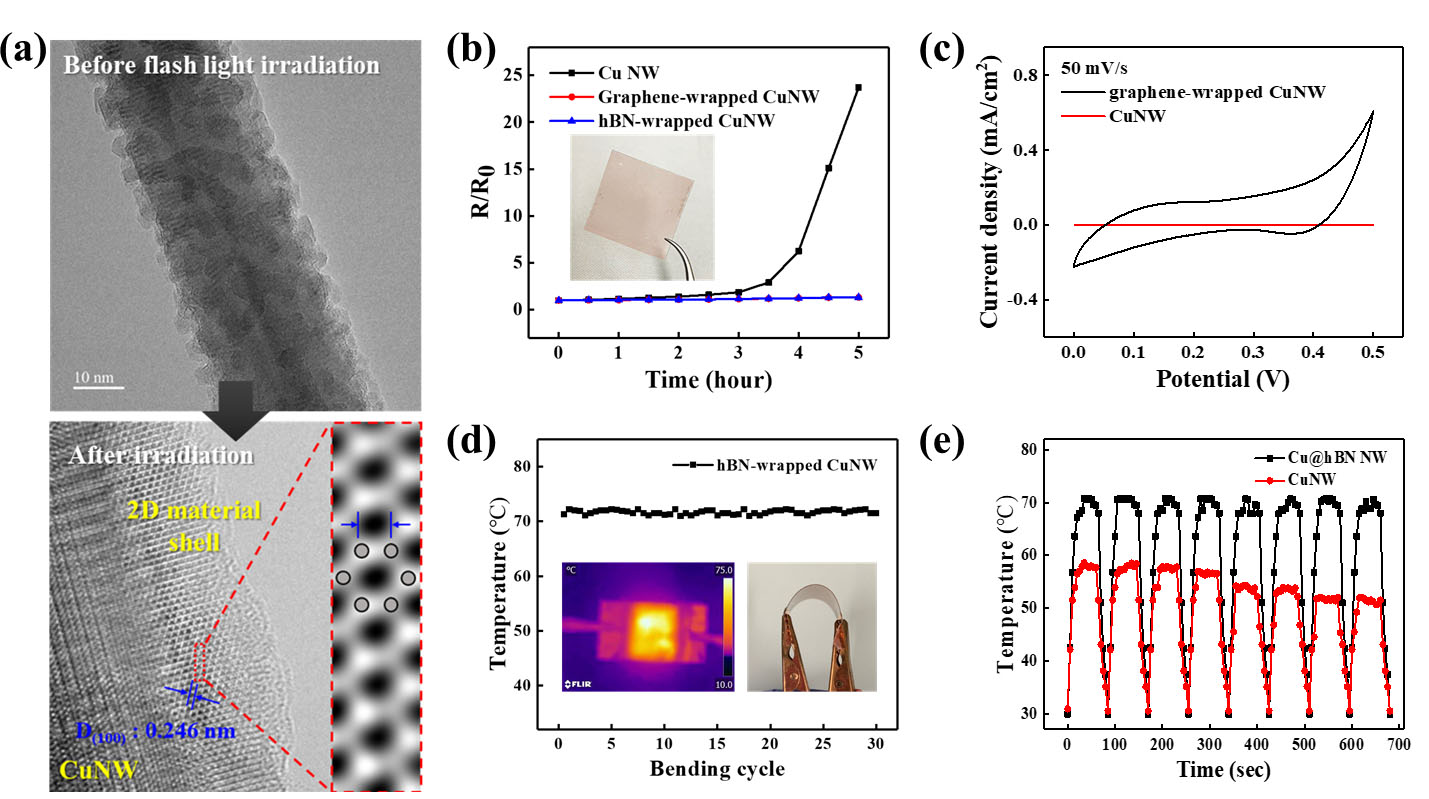| Mar 31, 2023 |
A high-performance transparent-flexible electronic device based on a copper-graphene nanowire synthesized by scintillation
(Nanowerk News) The world's first technology for synthesizing high-quality, low-cost copper-graphene nanowires using intense scintillation has been developed by Professor Yoonkyu Lee's research team at DGIST. This groundbreaking technique has paved the way for the mass production of high-quality transparent-flexible electrode materials, which are essential in the creation of next-generation electronic devices.
|
|
The team's research has been published in the prestigious international journal Nano Energy ("Ultrastable 2D material-wrapped copper nanowires for high-performance flexible and transparent energy devices").
|
 |
| High-performance transparent-flexible electronic devices based on copper-graphene nanowire. (Image: DGIST)
|
|
By shining intense light on the surface of a copper wire, the research team was able to synthesize graphene and increase the production rate while simultaneously lowering the production cost of these electrode materials. The technology is not only applicable to various 2D materials, but its applicability can also be extended to the synthesis of different metal-2D material nanowires.
|
|
Utilizing the copper-graphene nanowires, the research team successfully implemented high-performance transparent-flexible electronic devices, such as transparent-flexible electrodes, transparent supercapacitors, and transparent heaters. These demonstrations showcase the commercial viability of the copper-graphene nanowire-based materials in various applications.
|
|
Professor Yoonkyu Lee expressed optimism about the future impact of this technology, stating, "We have developed a method for mass-producing the next-generation transparent-flexible electrode material based on high-quality copper-graphene nanowires at a low production cost. In the future, we expect that this technology will contribute to the production of core electrode materials for high-performance transparent-flexible electronic devices, semitransparent solar cells, or transparent displays."
|

